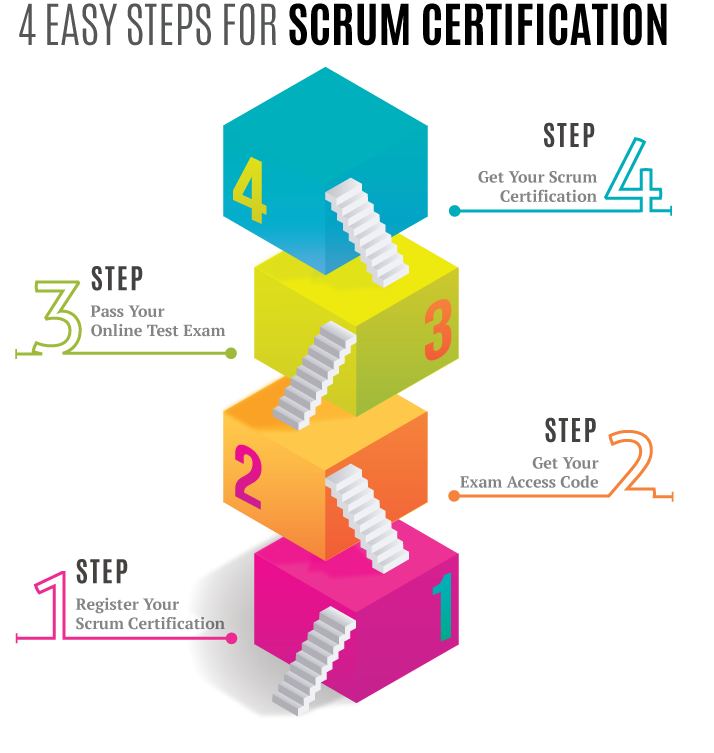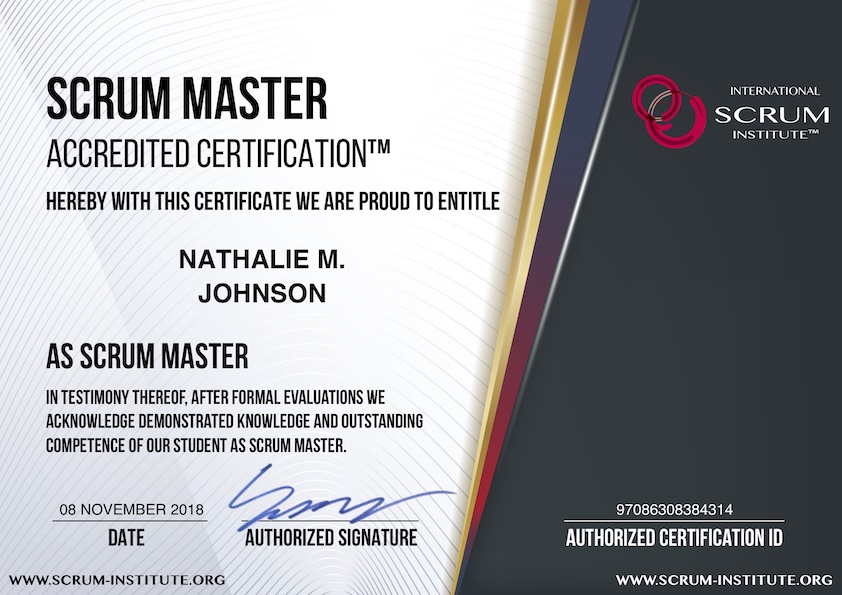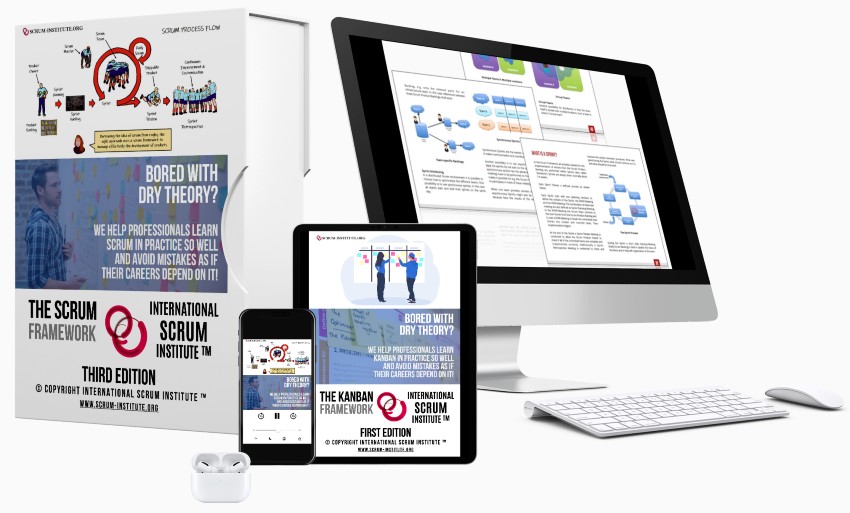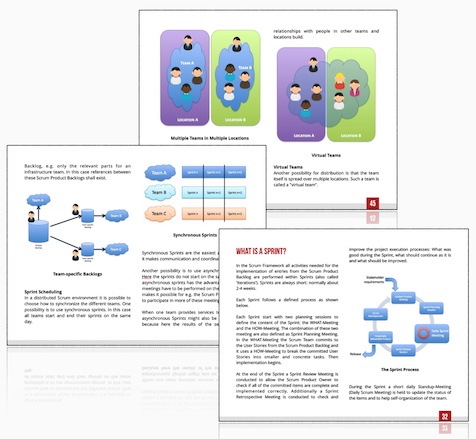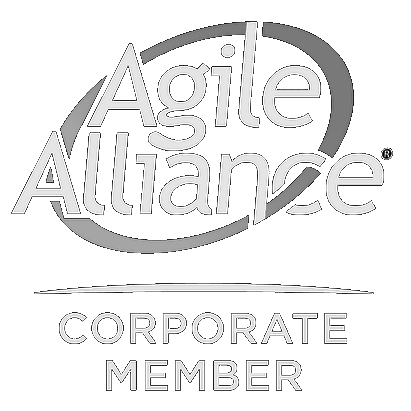What is Scrum?
Main Components of the Scrum Framework
Definition of Scrum: Scrum is a lightweight agile project management framework mainly used for software development. It describes an iterative and incremental approach to deliver work, solve problems for commercial and non-profit projects across all industries and fields in life.
Scrum is a set of components that gives structure to agile project management. At its heart, it focuses on a comprehensive list known as a Product Backlog. This list contains all the necessary ingredients for product improvement, such as feature enhancements and bug fixes. However, it's not just a simple shopping list. It serves a critical purpose by acting as the single source of requirements for any changes to be made to the product. Each item's importance is reflected in its prioritization, guiding the team on what to tackle next. So let's start by exploring this compelling component in more detail.
In the Scrum framework, the main components include: the Product Backlog, Sprint Backlog, Increment, Daily Stand-up, Sprint Review, and Sprint Retrospective. These components facilitate iterative and incremental development, continuous improvement, and effective collaboration within Scrum teams.
Scrum can be used in all kinds of projects inside and outside software and technology businesses: from developing complete business software suits, to developing only certain parts of larger systems in any given industry, for customer or internal projects.
The Scrum Framework itself is very simple. It defines only some general guidelines with only a few rules, roles, artifacts and events. Nevertheless each of these components is important, serves a specific purpose and is essential for a successful usage of the framework.

The main components of Scrum Framework are:
- The three roles: Scrum Master, Scrum Product Owner and the Scrum Team
- A prioritized Backlog containing the end user requirements
- The Sprints (Increments)
- Scrum Events: Sprint Planning Meeting (WHAT-Meeting, HOW-Meeting), Daily Scrum Meeting, Sprint Review Meeting, Sprint Retrospective Meeting
The Key Components of Scrum
When it comes to Scrum, three main components form the backbone of this agile framework: Product Backlog, Sprint Backlog, and Sprint(Increment). These elements, working in tandem, provide clarity, structure, and direction to the project. Let's unpack each one to understand their crucial roles in Scrum development.
Product Backlog
The Product Backlog can be likened to a treasure map for the project. It is a dynamic list of all the tasks, requirements, features, enhancements, and bug fixes needed for a product. In essence, it serves as the single source of truth for any changes or improvements aimed at enhancing the product. Dynamic in nature, it evolves over time in line with new information, evolving priorities, and feedback from stakeholders and customers.
Maintaining this prioritized list is crucial as it guides decision-making regarding what functionality should be included in the product and when it should be delivered. Essentially, this backlog lays the foundation for the entire project, shaping what needs to be done and in what order.
Sprint Backlog
On the other hand, we have the Sprint Backlog. Unlike the expansive scope of the Product Backlog, the Sprint Backlog is a distilled version containing specific work items selected by the team during sprint planning. It acts as a blueprint for executing tasks within a sprint. Coupled with a clear plan for delivering the product Increment and realizing the Sprint Goal, it sets out a clear pathway for progress within a set timeframe.
Understanding that the Sprint Backlog is founded on a subset of tasks extracted from the Product Backlog during sprint planning allows teams to allocate their focus on key activities that align with immediate goals. By bringing clarity to who is working on what and making visible progress towards sprint objectives, this component enhances team cooperation and accountability.
Sprint (Increment)
As we move through these core elements of Scrum, we encounter perhaps one of its most vital components—the Sprint (Increment). An increment is essentially a tangible output leveraged from all Product Backlog items completed during a sprint; consider it as a potentially shippable product functionality. This means that at any point during the project timeline (commonly after each sprint), we obtain a cohesive whole culmination from all allocated tasks—ready to ship if required.
In summary, these three components not only drive efficient collaboration among team members through transparency but also provide essential direction by creating focus points throughout the project journey. The Product Backlog defines where we're going; the Sprint Backlog holds our roadmap for reaching incremental objectives; and together, they manifest as tangible output—a precise reflection of progress made at every point. Understanding these core components forms an integral part of harnessing Scrum’s power for effective agile project management.
In navigating through Scrum’s fundamental building blocks, we pave our way towards exploring another cornerstone of agile methodology—the diverse roles that constitute a successful scrum team.
Deep Dive into Scrum Roles
The roles of the Scrum Master and Product Owner are crucial to the success of a Scrum project. Let's explore these roles in detail to understand their significance in Agile project management.
The Scrum Master
The Scrum Master plays a pivotal role as the guardian of the Scrum process, ensuring that the team adheres to the principles and practices of the framework. They act as a servant leader, fostering an environment of collaboration and empowering the team to continuously improve and deliver high-quality results.
One key aspect of their responsibility is to remove any obstacles that may hinder the team's progress, whether it's addressing internal conflicts or facilitating communication with external stakeholders. This ensures that the team remains focused on achieving their objectives without unnecessary distractions.
Moreover, they coach and mentor the team in Agile methodologies so they can fully grasp and apply these principles effectively. By organizing workshops, training sessions, and other learning opportunities, the Scrum Master helps build a strong foundation of Agile practices within the team.
The Product Owner
On the other hand, we have the Product Owner, who serves as the connection between the development team and the stakeholders, particularly representing the voice of the customer. Their primary responsibility revolves around defining and prioritizing deliverables to maximize value for both users and business objectives. A crucial aspect of this role includes translating customer needs into well-defined user stories and product backlog items. These refined requirements provide clear direction and purpose for development efforts.
Furthermore, it's essential for the Product Owner to maintain ongoing collaboration with stakeholders to gather feedback iteratively. By staying attuned to changing market conditions and evolving customer preferences, they ensure that the product remains aligned with strategic goals while meeting user expectations.
Consider this: Just like an artist meticulously shapes a piece according to their vision while weaving in audience feedback along the way, a Product Owner carefully crafts product features based on customer input, iterating until it aligns both with users' needs and business objectives.
The nuances of these roles demonstrate how they complement each other within a Scrum environment, driving collaboration, value delivery, and alignment with organizational goals.
Understanding how these key roles work together paves the way for a deeper appreciation of how artifacts play an essential role in agile projects.
The Scrum Team Member
The Scrum Team Member is a vital role within the Scrum Framework, contributing to the collaborative effort of a group of people working towards a common goal. They play a crucial role in various ways, utilizing their diverse skills to enhance the development of products. Engaging in the daily stand-up meetings, a Scrum Team Member provides updates on their progress and discusses impediments, fostering effective communication within the team. Additionally, they actively participate in sprint planning sessions, contributing to the determination of velocity, a metric measuring the team's capacity for completing work. The Scrum Team Member interacts with artifacts like the burndown chart and the Scrum board, which visually represent progress and tasks. They adhere to the Definition of Done, ensuring that the team's work meets the established criteria, and embrace a self-organizing approach, empowering themselves to make decisions that contribute to the overall success of the project.
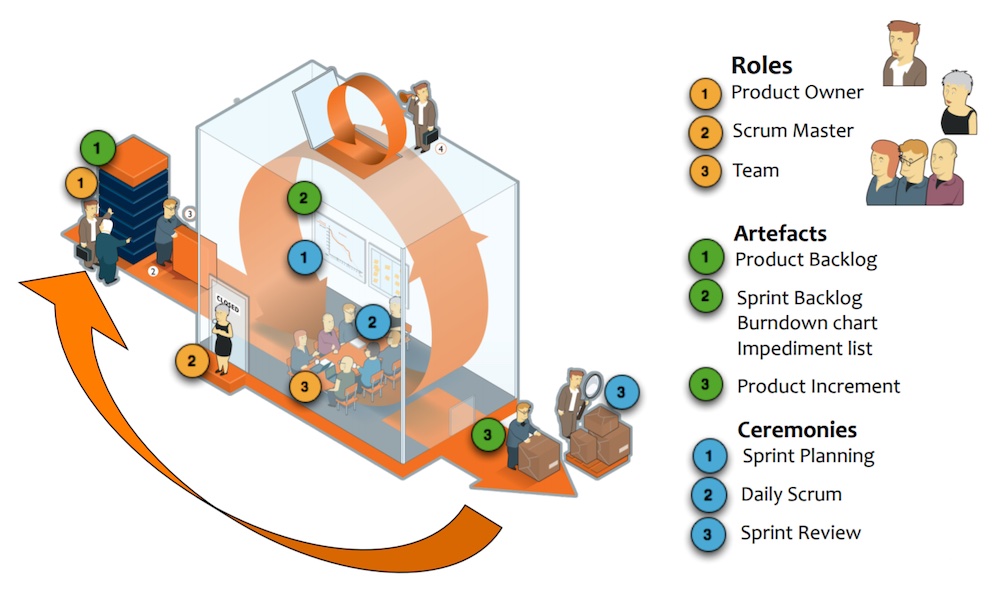
Understanding Scrum Artifacts
Scrum artifacts are the tangible byproducts of the work performed during a Scrum project. These artifacts play a crucial role in facilitating communication and understanding among the Scrum team members and stakeholders. In this section, we'll explore the user stories and burndown charts—the two pivotal artifacts essential to successful Agile project management.
User Stories
User stories are like small windows into the larger project. They are short, simple descriptions of a feature as seen from the perspective of the end-user or customer who desires the new capability. Imagine these user stories as messages penned down on post-it notes or tiny index cards, capturing essential details about what a particular functionality should accomplish. They are written in everyday language and convey the desires and needs of users in a manner well understood by both technical and non-technical team members.
The high-value of crafting these user stories lies in their ability to serve as a proxy for functional requirements, acting as conversation starters between developers, testers, designers, and even clients—a way to understand what needs to be built.
Crafting useful user stories:
- Engage your Users: User stories lay out what your customers truly want.
- Focus on Values & Outcomes: They concentrate on the core value offered to their users.
- Encourage Engagement & Interaction: Foster interaction rather than just building things.
Burndown Charts
Burndown charts (See more Burndown Chart in Scrum) visually represent the amount of work left to do versus time—showing work completed on the Y-axis and time on the X-axis. It's like having someone paint a picture for you, portraying your progress or lack thereof across various sprint cycles.
These graphs aren't merely something pretty to look at; they're an instrument with which to measure project progress based on historical data, providing valuable retrospection that can guide future decisions. Having visual access to how much work remains and how long it may take creates transparency, empowering teams with insights necessary for informed decision-making.
Remember that burndown charts should not only reflect the movement of tasks across time but also communicate risk levels associated with achieving certain time milestones. These charts become a dialogue starter between different parts of a team helping you better understand what obstacles lie ahead.
In creating user stories and maintaining burndown charts, we bring forth clarity and transparency. It is through these artifacts that we embody principles such as collaboration, simplicity,and open communication across Agile teams.
So far, we have uncovered essential Scrum artifacts vital for effective project management. Now let's move our focus to evaluating key ceremonies within Scrum methodology.
Scrutinizing Scrum Ceremonies
The heart and soul of Scrum lies in its ceremonies. These ceremonies are specially designed events that help keep the work moving forward, ensure that everyone is on the same page, and provide opportunities for the team to inspect and adapt. Now, let's delve into some of these fundamental ceremonies to understand their roles and importance in Agile project management.
Daily Stand-ups
The Daily Stand-up is a short, time-boxed meeting that usually takes place at the same time and same place every day. Here, the development team comes together to synchronize activities and make visible any impediments that may affect the team's performance. It's not a status report where they relay all the details about their tasks; rather, it's a quick check-in to ensure everyone understands what the team is working on, what might be blocking their progress, and if anyone needs help.
The purpose of this daily meeting is to foster collaboration among team members and promote transparency. It allows everyone to understand what others are working on so that they can identify potential dependencies or areas where they can offer support. By addressing any roadblocks immediately, the team can expedite solutions and mitigate delays.
Sprint Planning
Another crucial ceremony in Scrum is the Sprint Planning meeting. This occurs at the beginning of each sprint – an iteration of work that typically lasts between one to four weeks. The goal here is to define what can be delivered in the increment and how the work will be achieved. During this session, the Scrum Team collaborates to discuss and agree upon a set of objectives for the upcoming sprint.
The focus of this event is twofold: firstly, deciding which items from the Product Backlog—a prioritized list of tasks—are feasible to be developed within the sprint; secondly, devising a plan on how to accomplish this work. Key aspects like setting achievable goals, outlining strategies, identifying potential challenges, and prioritizing tasks are thoroughly deliberated during Sprint Planning.
Sprint Reviews
The Sprint Review, a pivotal ceremony in the Scrum Framework, serves as a platform for stakeholders and the development team to come together and address critical questions about the product's progress. Unlike the daily standup, the Sprint Review occurs at the end of each sprint, providing a comprehensive overview of the product development cycle. This gathering fosters a sense of community, bringing together individuals with diverse perspectives, including team members, stakeholders, and end-users. It functions as a knowledge-sharing session, where insights gained throughout the sprint are exchanged, leading to a collective understanding of the product's trajectory. Additionally, the Sprint Review is a forum for presenting and evaluating new ideas, ensuring that the project remains dynamic and responsive to evolving requirements. In essence, the Sprint Review acts as a crucial checkpoint, promoting collaboration, transparency, and continuous improvement within the Scrum framework.
Sprint Retrospectives
Similar to any learning process, Agile methodology values introspection and continuous improvement. This is where Retrospectives come into play. A Retrospective meeting provides an opportunity for the Scrum Team to inspect itself and create a plan for improvements to be enacted during the next sprint.
Imagine it as a sort of 'lessons learned' gathering—a chance for team members to openly discuss what went well during the sprint, what could have been improved, and brainstorm new approaches for better results in future endeavors. This commitment to evolving helps teams embrace change, refine their processes, and boost performance over time.
These ceremonies inherently maximize collaboration, envision continual progress, and ensure an efficient workflow—integral components that underpin successful project delivery within an agile framework.
Now with a deeper understanding of fundamental Scrum components, it's time to explore how Scrum can benefit your project.
How Scrum Benefits Your Project
When it comes to managing a project, efficiency and adaptability are key elements. This is where Scrum truly shines, bringing a range of benefits that can elevate the effectiveness and success of your project.
Increased Productivity
One of the greatest advantages of using Scrum is the significant boost to productivity it facilitates. The iterative nature of Scrum promotes continuous improvement, providing the team with regular opportunities to reflect on their processes and make necessary adjustments. By breaking work into manageable iterations or sprints, teams can focus on delivering small, valuable increments of work, thus ensuring that progress is consistently being made.
Moreover, the emphasis on collaboration and self-organization within Scrum teams fosters a sense of ownership and accountability. This, in turn, motivates team members to work more cohesively and efficiently towards achieving collective goals. As a result, productivity levels soar, allowing projects to move forward at an accelerated pace.
Enhanced Transparency
Another significant benefit of implementing Scrum is the enhanced transparency it provides throughout the entire project lifecycle. Through daily stand-up meetings, regular reviews, and retrospectives, all team members are kept well-informed about project statuses, potential obstacles, and accomplishments. This creates an environment of open communication and feedback exchange, ensuring that everyone has a clear understanding of the project's progress at any given time.
An increase in transparency not only equips team members with better insights but also enables stakeholders and clients to have complete visibility into the evolving state of the project. This transparency forms a foundation for trust and confidence in the team's ability to deliver as per expectations.
Flexibility
In today's dynamic business landscape, the ability to adapt swiftly to change is a critical component of project success. The inherently flexible nature of Scrum allows teams to readily respond to alterations in requirements or customer needs during development. With shorter development cycles and frequent reviews, any necessary changes can be incorporated seamlessly without derailing the entire project.
Adapting to new market conditions or incorporating customer feedback becomes an organic part of the process rather than an arduous undertaking. This flexibility ensures that projects remain aligned with evolving objectives and market demands, making it easier for teams to deliver value that resonates with end-users.
By increasing productivity, fostering enhanced transparency, and promoting flexibility in meeting the ever-changing needs of projects and customers, Scrum substantially enhances the overall effectiveness of project management.
What are the Other Top Components for Scrum Framework?
Self-Organization
Important in all Scrum projects are self-organization and communication within the team. There is no longer a project manager in a classical sense. In the Scrum Framework the Scrum Master and the Scrum Product Owner share his responsibilities. However, in the end the team decides what and how much they can do in a given project iteration (Sprint).
Continuous Improvement
Another central aspect within the Scrum Framework is continuous improvement: inspect & adapt. The Scrum Teams have to frequently inspect and assess their created artifacts and processes in order to adapt and optimize them. In the midterm this will optimize the results, increases predictably and therefore minimize overall project risk.
The Scrum Framework tries to deal with the fact that the requirements are likely to change quickly or are not completely known at the start of the project. The low-level requirements are only defined at the time when they are going to be really implemented. In Scrum, changes and optimizations of product, requirements and processes are an integral part of the whole engineering cycle.
Communication
Another cornerstone of the Scrum Framework is communication. The Scrum Product Owner works closely with the Scrum Team to identify and prioritize functionality. This functionality is written down in user stories and stored in a Scrum Product Backlog. The Product Backlog consists everything that needs to be done in order to successfully deliver a working software system.
Team Empowerment
The Scrum Team is empowered to only select the user stories they are sure they can finish within the 2-4 weeks of Sprints. As the Scrum Team is allowed to commit their own goals they will be more motivated and work with best possible performance. The Scrum Master is another important role in the Scrum Framework as it works as a servant-master with the Scrum Team. His/her main tasks are to make the Scrum team understand how Scrum operates, to protect the Scrum Team from external interruptions and to remove impediments that hinder the Scrum Team to reach its maximum productivity.
The Scrum Framework in its simple form is best used for smaller, one-team projects. But with the introduction of additional roles like the "Chief Scrum Product Owner" it is also usable in bigger multi-teams and/or distributed-team projects.
Practical Applications of Scrum Components
One of the crucial practical applications of Scrum components is User Story Mapping, a technique that helps teams understand how a user will interact with the software. This visual aid simplifies capturing user requirements and mapping out the user journey, which is essential for creating a comprehensive product backlog. User story mapping enables teams to streamline the features required to meet user needs by visually breaking down the big picture into manageable components, thus aligning stakeholders and prioritizing work items based on user needs.
This visual representation also aids in discovering gaps or duplication within the development workflow and serves as a tool for communicating and designing an overall product roadmap. Through story mapping, team members, product owners, scrum masters, and developers collaborate to see the product from end to end, obtaining a deeper understanding of users' expectations and refining their product backlog based on these insights.
Another vital practical application of Scrum components is Agile Estimation, leveraging relative sizing and planning poker to estimate the effort needed to complete user stories or tasks more accurately. These estimation techniques facilitate better planning and forecasting by involving the entire team in estimating the efforts required to complete a task.
Relative sizing allows faster estimations by comparing new items against those previously completed using various relative sizes such as t-shirt sizing (S, M, L) or Fibonacci sequence (1, 2, 3, 5, 8...). On the other hand, planning poker involves active participation from all team members where each participant gives estimations independently until an agreement is reached through discussions.
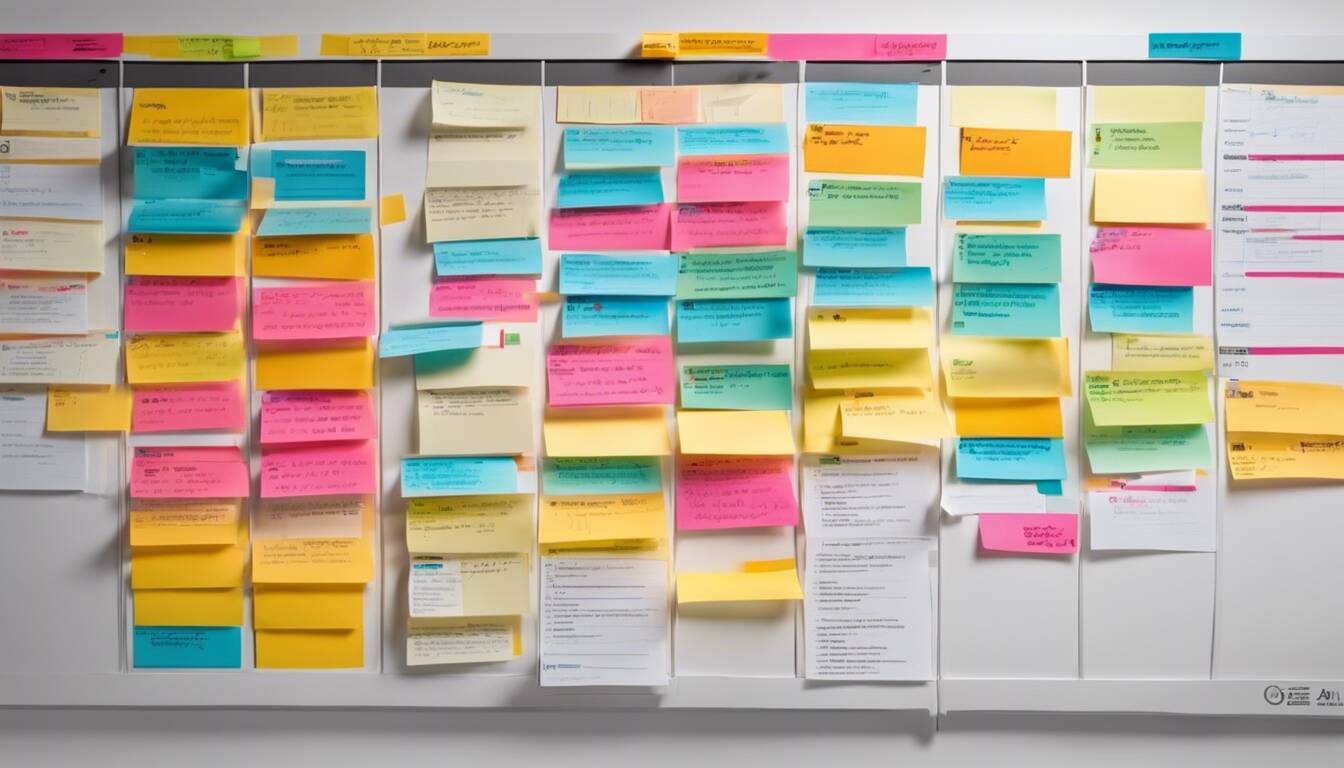
For instance, a development team estimates a new feature using planning poker. One developer assigns two weeks to its completion whereas another assesses it as a one-week task. This encourages discussion amongst team members about factors affecting each estimation: complexity, risks involved, or dependencies on other tasks. This inclusive approach leads to improved insights regarding the scope of work involved in completing the feature.
In summary, User Story Mapping and Agile Estimation are fundamental practical applications of Scrum components that actively contribute to effective planning and coherent understanding within agile projects. Utilizing these approaches equips teams with powerful tools to navigate through complex project requirements efficiently while ensuring alignment with users' needs throughout the development process.
Recap of Scrum Components
In the realm of agile project management, Scrum stands out as a powerful framework that emphasizes collaboration and adaptability. At its core, Scrum organizes work into time-boxed iterations known as sprints, each lasting a few weeks. The key players in this methodology include the Scrum Team, comprised of the Product Owner, Scrum Master, and the cross-functional team responsible for delivering valuable increments. The Scrum Team collaborates closely with stakeholders, ensuring their input is considered and incorporated into the development process.
Within the Scrum framework, components play a pivotal role in shaping the development process. These components encompass roles, artefacts, and events that collectively drive the team towards delivering increments of high value. The Product Backlog serves as the dynamic repository of all work items, prioritized by the Product Owner based on business value. As the team progresses through each sprint, the Scrum Master facilitates and guides the process, ensuring adherence to Scrum principles. Moreover, the Scrum Team collectively works to produce an increment – a potentially releasable version of the product that adds tangible value. This collaboration among roles, artefacts, and events not only propels the team forward but also enhances transparency, promoting a shared understanding of progress among all stakeholders.
Undoubtedly, the linchpin of the Scrum framework lies in its ability to generate a valuable increment at the end of each sprint. This incremental delivery not only showcases tangible progress but also facilitates rapid adaptation to changing requirements. The dedication of the Scrum Team, guided by the Scrum Master and driven by the Product Owner's vision, results in a continuous delivery cycle that aligns with stakeholder expectations. This relentless focus on producing increments ensures that the Scrum framework remains a dynamic and adaptive approach, bringing substantial value to both the team and the end users. The clarity in roles, the collaborative approach to artefacts, and the rhythmic cadence of sprints make Scrum a transformative framework, providing a structured yet flexible path to success in the realm of product development.
Explore these practical applications further with our free downloadable resources at International Scrum Institute and enhance your understanding of agile project management today!
Share It With Your Colleagues and Friends to Help Them Learn:
What is Scrum? - Main Components of Scrum Framework
|
|

|

|

|

|
|
 SCRUM INSTITUTE™
SCRUM INSTITUTE™



